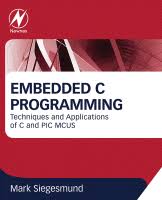White Paper: Programming Embedded Systems (O'Reilly)
Abstract
This white paper provides a comprehensive overview of embedded systems programming, drawing insights from the O'Reilly book series. It explores the unique challenges and considerations associated with developing software for resource-constrained devices and real-time systems. The paper delves into key programming concepts, hardware interactions, and best practices, equipping readers with the knowledge needed to create efficient and reliable embedded systems.
Introduction
Embedded systems, characterized by their integration into larger systems or devices, have become ubiquitous in modern life. From smartphones and IoT devices to industrial automation and medical equipment, embedded systems power a wide range of applications. Programming these systems presents distinct challenges due to their limited resources, real-time requirements, and often specialized hardware. This white paper aims to provide a solid foundation for embedded systems programming, drawing from the expertise presented in the O'Reilly book series.
Key Concepts and Considerations
- Hardware Interactions:
- Microcontrollers and microprocessors: Understanding their architecture, instruction sets, and peripherals.
- Interfacing with peripherals: Using I/O ports, timers, serial communication, and other interfaces.
- Memory management: Allocating and managing limited memory resources efficiently.
- Real-Time Systems:
- Scheduling algorithms: Prioritizing tasks based on deadlines and importance.
- Interrupt handling: Responding to external events in a timely manner.
- Synchronization: Coordinating multiple tasks and preventing race conditions.
- Embedded Systems Programming Languages:
- C and C++: The most widely used languages for embedded systems due to their efficiency and control.
- Assembly language: Understanding assembly for performance-critical sections and hardware-specific tasks.
- Other languages: Exploring the use of languages like Rust, Python, and JavaScript in certain embedded applications.
- Debugging and Testing:
- Embedded debuggers: Using tools to step through code, inspect variables, and identify errors.
- Test-driven development (TDD): Writing tests before writing code to ensure quality and maintainability.
- Simulation and emulation: Creating virtual environments to test embedded systems without physical hardware.
- Power Management and Energy Efficiency:
- Low-power modes: Optimizing power consumption during idle periods.
- Energy-efficient algorithms: Designing algorithms that minimize power usage.
- Battery management: Monitoring battery levels and optimizing charging/discharging cycles.
Best Practices for Embedded Systems Programming
- Modularity: Breaking down code into well-defined modules for better organization and reusability.
- Real-time awareness: Designing systems with real-time constraints in mind, ensuring timely responses to events.
- Memory optimization: Minimizing memory usage to avoid out-of-memory errors and improve performance.
- Robustness: Incorporating error handling and fault tolerance mechanisms to prevent system failures.
- Security: Protecting embedded systems from vulnerabilities and unauthorized access.
References
- O'Reilly Embedded Systems Books: Explore the O'Reilly catalog for specific titles on embedded systems programming.
- Embedded Systems Conferences: Attend industry conferences like Embedded Systems Conference (ESC) to stay updated on the latest trends and technologies.
- Online Communities and Forums: Participate in online communities and forums dedicated to embedded systems programming for discussions, advice, and support.
- Hardware Manufacturers' Documentation: Refer to the documentation provided by microcontroller and microprocessor manufacturers for detailed information on their devices and peripherals.
Conclusion
Programming embedded systems requires a unique blend of hardware and software knowledge. By understanding the key concepts, considerations, and best practices outlined in this white paper, developers can effectively create efficient, reliable, and secure embedded systems. The O'Reilly book series provides valuable resources for deepening your understanding and mastering the art of embedded systems programming.



